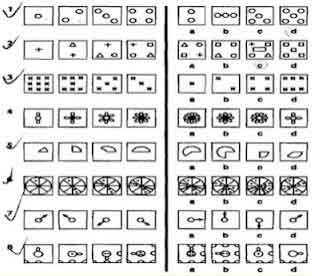Coupling Matrix Synthesis Software Crack
A software dedicated to the equivalent network synthesis problem (microwave filter synthesis, coupling matrix synthesis and extraction). Isomers; polymerization; synthesis; adhesion; aldehyde methacrylate; collagen; condensation reactions; copolymerization; coupling agents; dentin; functional. Isotropic tensor; matrix method; nonlinear viscoelasticity; piezoelectricity. Iterative A.O.V. Algorithms; statistical software maintenance and distribution;.
CST - Computer Simulation Technology AG (CST) previewed the upcoming version of its flagship electromagnetic (EM) simulation tool, CST STUDIO SUITE® 2017, at European Microwave Week (EuMW) 2016, Booth #5. CST STUDIO SUITE is used by engineers, designers and researchers in market-leading companies in industries including automotive, aerospace, defense, electronics, healthcare and telecommunications. CST’s Complete Technology approach to simulation means that CST STUDIO SUITE offers a range of both general purpose and specialized solvers for EM and multiphysics problems in one user-friendly interface. Accurately simulating the phenomena that appear when components are combined into systems has long been a priority for CST®, and CST STUDIO SUITE 2017 includes several new features which allow individual components to be combined and simulated effectively. Related Resources. Brand new in CST STUDIO SUITE 2017 is Filter Designer 3D (FD3D) – a design and synthesis tool for cross-coupled cavity filters.
With FD3D, filter designers can design for arbitrary filter response with easy placement of transmission zeros and a wide range of coupling resonator topologies available to realize the corresponding filter response. FD3D can also extract the coupling matrix which helps to analyze and tune a device, and is the first commercial product to include diplexer filter synthesis. When combined with CST’s unique moving mesh technology and the advanced trust region framework optimizer, FD3D allows the user to design complex high order and multimode cavity filters with unprecedented precision. The asymptotic solver, CST’s ray-tracing (SBR) solver for the analysis of very large platforms, makes a significant advance with the introduction of antenna-to-antenna coupling. Antennas can be imported as nearfield or farfield sources and integrated on the platform, and the asymptotic solver can calculate the coupling parameters between them. This feature is especially useful for system integrators because antenna field sources can be imported from a variety of solvers or from measurement. Data from a wide variety sources can be brought together in a single system-level simulation.
Psikotes adalah sebuah tahap ujian yang dipertandingkan untuk meraih posisi tertentu baik itu untuk lulus ditempat kuliah yang diinginkan maupun juga untuk lulus disebuah perusahaan yang diminati ada yang mengejar jabatan dan bahkan mencari. Ada yang berusahaan kerja di perusahaan keuangan / Bank untuk Menjadi CS atau Teller baca terlebih dahulu: Sebelumnya baca juga: • • • • • • • Nah kali ini kita akan membahas masalah Psikotes yang mana banyak yang mengeluhkan tidak berhasil dalam tes ini bahkan merasa stres dengan ujian Psikotes ini padahal ujiannya hanya menyamakan gambar, urutan angka dan lainnya, namun hal ini tidaklah sepele tes ini menguji kecerdasan IQ kita, bahkan bisa dikatakan belum tentu teman-teman yang ahli berhitung / ahli matematika ataupun kimia dan ahli lainnya bisa tembus dalam ujian ini.  Yang mana sama-sama kita ketahui saat ini lowongan kerja sangat sulit dimasa sekarang, bahkan banyak tamatan sekolah bahkan yang sarjana sekalipun menganggur. Durasi tes ini biasanya memakan waktu yang lama dan menguji secara fisik dan mental.
Yang mana sama-sama kita ketahui saat ini lowongan kerja sangat sulit dimasa sekarang, bahkan banyak tamatan sekolah bahkan yang sarjana sekalipun menganggur. Durasi tes ini biasanya memakan waktu yang lama dan menguji secara fisik dan mental.
Combined with the new nearfield monitor, users can now identify the coupling paths between antennas efficiently, and the new Interference Task can identify potential EMC issues caused by co-site interference. CST STUDIO SUITE also sees significant improvements to its class leading Array Designer.
The current version of the array wizard already allows users to design and synthesize antenna arrays, from individual elements up to full arrays. The 2017 version will add support for non-periodic and arbitrary 3D arrays, automatically constructing the full 3D simulation models. Even large arrays can then be simulated accurately and quickly, on modest hardware, using CST’s numerically efficient time domain solver with conformal meshing technology. CST staff will be available at booth #5 to discuss these and the other new features.
In addition, CST will be hosting the Modeling Challenge powered by CST STUDIO SUITE Student Edition, and invites attendees to participate for the chance to win in the prize draw. “Full-system simulation is becoming increasingly important for our customers across a range of industries and fields, whether they’re designing a device such as a cross-coupled filter, an antenna array, or integrating multiple components on a platform such as a phone or an aircraft,” commented Dr. Peter Thoma, Managing Director R&D at CST.
